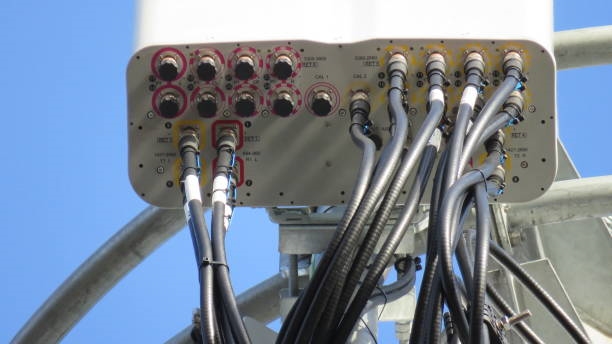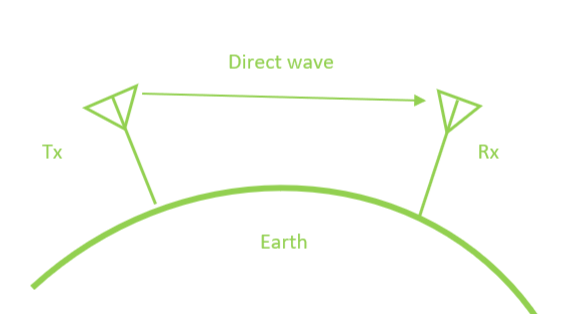The global radio frequency (RF) industry faces renewed patent disputes as Murata Manufacturing Co., Ltd. has filed lawsuits against Jiangsu Maxscend Microelectronics Co., Ltd. in China and South Korea, alleging that Maxscend's thin-film surface acoustic wave (TF-SAW) filters infringe five of Murata's core patents. This article examines the technical details of the patents and the implications for the RF filter market.
Background of RF Filters and TF-SAW Technology
RF filters are critical components in modern communication systems, responsible for filtering out unwanted signal frequencies to ensure reliable operation within specific frequency bands. Common filter types include surface acoustic wave (SAW), bulk acoustic wave (BAW), low-temperature co-fired ceramic (LTCC), and integrated passive device (IPD) filters. The current dispute centers on SAW filters, specifically TF-SAW technology, which is known for its high-frequency performance and cost advantages over BAW filters in certain applications.
Details of the Patent Lawsuits
In China, four lawsuits filed at the Shanghai Intellectual Property Court involve the following Murata patents:
- ZL201480066958.9: Covers acoustic wave devices and filter designs.
- ZL201580059165.9: Focuses on acoustic wave device structures.
- ZL201680030389.1: Addresses filter device configurations.
- ZL201680046210.1: Relates to acoustic wave devices, high-frequency front-end circuits, and communication systems.
A fifth lawsuit was filed in South Korea, targeting Maxscend's operations in a key market where it supplies major clients like Samsung. Approximately 60% of Maxscend's revenue comes from overseas markets, making South Korea a strategic focus.
Key Patent: ZL201680046210.1
The Chinese patent ZL201680046210.1 is central to Murata's TF-SAW technology and focuses on the multilayer stack design of TF-SAW filters, particularly for suppressing higher-order mode spurious signals. Its key features include:
- Composite Structure: A multilayer stack of electrodes, a piezoelectric layer, and a support layer on a silicon substrate reduces the propagation speed of surface acoustic waves, enhancing high-frequency performance.
- Mode Suppression: Precise adjustments to layer thickness and electrode spacing optimize modal distribution, minimizing spurious signals from higher-order modes and improving out-of-band rejection.
- Process Techniques: Photolithography and thin-film deposition ensure precise layer thickness and structural symmetry, reducing energy leakage.
This patent enables TF-SAW filters to address the issue of spurious signal interference at high frequencies, making them a cost-effective alternative to BAW filters in certain applications. Its 11-year validity strengthens Murata's position in the high-frequency filter market.
Patent ZL201480066958.9: Electrode Innovation
Another critical patent, ZL201480066958.9, focuses on the electrode structure of SAW and TF-SAW filters, with an emphasis on suppressing higher-order mode spurious signals and optimizing high-frequency performance. A notable innovation is the slanted electrode design, where the fingers of the interdigital transducer (IDT) are angled to alter the excitation mode of surface acoustic waves. This design significantly enhances out-of-band rejection by reducing spurious signals.
The slanted electrode design is a cornerstone of Murata's Incredible High Performance (IHP) SAW technology. Competitors may attempt to bypass this design by using a Piston structure, which relies on longitudinal vibration modes and complex busbar perforations. However, Murata's related patent, ZL201580059165.9, covers such alternative approaches, creating a robust and interconnected patent portfolio.
Murata's Patent Strategy
Murata's TF-SAW patents form a comprehensive and overlapping network, covering critical aspects of filter design, including piezoelectric-on-insulator (POI) substrate stacks and electrode configurations. This strategy makes it challenging for competitors to develop TF-SAW products without infringing on Murata's intellectual property. Industry observers note that Murata's approach extends beyond protecting its own products to preventing competitors from using similar technologies, even in unrelated applications.
Maxscend's Response
Maxscend has stated that its products are independently developed and denies Murata's infringement claims. The company plans to vigorously defend itself in court, noting that the lawsuits target only two specific filter models, which account for a small portion of its revenue. Maxscend asserts that the litigation will have minimal impact on its financial performance, pending the courts' final rulings.
Implications for the RF Industry
The lawsuits highlight the competitive and legally complex landscape of the RF filter market. Murata's aggressive patent enforcement, seen in prior actions against other Chinese firms, suggests a strategy aimed at maintaining its dominance in TF-SAW technology. The claimed damages¡ª300,000 CNY per case in China and 100 million KRW in South Korea, totaling approximately 1.704 million CNY¡ªindicate that Murata's primary goal may be to restrict competitors' use of its patented technologies rather than seeking significant financial compensation.
If Murata prevails, the TF-SAW market could face significant barriers to entry, particularly for Chinese manufacturers aiming to compete in the high-end filter segment. The outcome of these lawsuits will likely influence the strategic decisions of RF filter manufacturers and their customers worldwide.
 ALLPCB
ALLPCB







